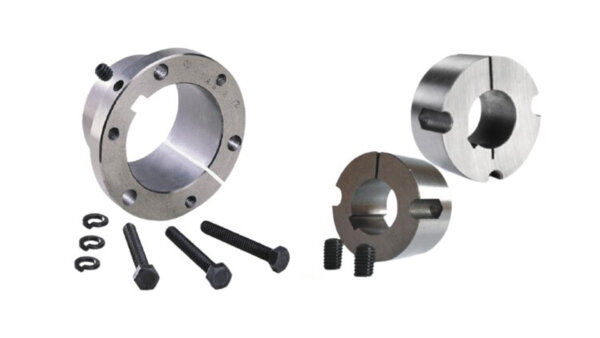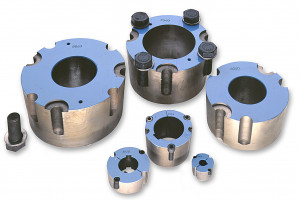
Are there any online calculators for determining the required taper bush size?
Yes, there are online calculators available that can help in determining the required taper bush size for specific applications. These calculators utilize various input parameters such as shaft diameter, hub diameter, torque, speed, and other relevant factors to provide recommendations on the appropriate taper bush size. Here are some sources where you can find online calculators for determining the required taper bush size:
- Manufacturer Websites: Many taper bush manufacturers provide online calculators on their websites to assist customers in selecting the correct taper bush size. These calculators are often based on the manufacturer's specific product range and include fields for inputting the necessary parameters. By entering the required information, such as shaft and hub dimensions, torque, and speed, the calculator can generate recommendations on the suitable taper bush size.
- Engineering and Mechanical Websites: Several engineering and mechanical websites offer online calculators and tools that cover a wide range of mechanical components, including taper bushes. These calculators are typically designed to provide general recommendations and may not be specific to a particular manufacturer's product range. They often require input parameters such as shaft diameter, hub diameter, and other relevant dimensions to calculate the appropriate taper bush size.
- Mobile Applications: Some mobile applications cater to mechanical engineering and power transmission calculations. These apps may include features for determining the required taper bush size based on input parameters such as shaft diameter, hub diameter, torque, and speed. They can be convenient for on-the-go calculations and are often available for both Android and iOS devices.
When using online calculators for determining the required taper bush size, it is important to ensure that the input parameters are accurate and representative of the specific application requirements. The calculated results should serve as a starting point for selecting the appropriate taper bush size, and it is advisable to cross-reference the recommendations with manufacturer catalogs or consult with technical experts to verify the suitability of the chosen size.
Additionally, keep in mind that while online calculators can be helpful tools, they may not account for all the nuances and specific factors of your application. It is still recommended to consult with taper bush manufacturers, suppliers, or engineering professionals to validate the calculated size and ensure a proper fit for your specific application.
By utilizing online calculators as a guide, you can simplify the process of determining the required taper bush size and make informed decisions when selecting the appropriate component for your application.

Where can I find tutorials on removing and replacing taper bushes in machinery?
If you are looking for tutorials on removing and replacing taper bushes in machinery, there are several resources available that can provide step-by-step instructions and guidance. Here are some places where you can find tutorials on this topic:
- Manufacturer or Supplier Websites: Many manufacturers or suppliers of taper bushes provide instructional materials on their websites. These tutorials may include written guides, videos, or diagrams that demonstrate the process of removing and replacing taper bushes in specific machinery. Visiting the websites of reputable taper bush manufacturers or suppliers and exploring their technical resources or support sections can often lead you to detailed tutorials.
- Online Video Platforms: Websites such as YouTube, Vimeo, or Dailymotion host a vast collection of instructional videos on various topics, including machinery maintenance and repair. Searching for keywords like "taper bush removal" or "taper bush replacement" on these platforms can yield tutorial videos that demonstrate the process visually. These videos can be helpful in understanding the practical steps involved in removing and installing taper bushes.
- Industrial Training Courses or Workshops: Some organizations or training institutes offer industrial maintenance or machinery repair courses that cover topics like taper bush removal and replacement. These courses may be available online or in-person, providing hands-on training and demonstrations. Participating in such training programs can give you a comprehensive understanding of the process and allow you to practice the skills under expert guidance.
- Engineering or Mechanical Forums: Online forums or communities focused on engineering or mechanical topics often have dedicated sections or threads where users discuss machinery maintenance and repair procedures. Browsing through these forums or posting specific questions related to taper bush removal and replacement can help you find valuable insights, tips, and resources shared by professionals or experienced enthusiasts in the field.
- Industry Publications or Books: Industrial magazines, books, or technical publications related to machinery maintenance and repair may include chapters or articles that cover taper bush removal and replacement. These resources often provide detailed explanations, accompanied by illustrations or diagrams, to guide you through the process. Checking relevant publications in the field of mechanical engineering or power transmission can provide you with in-depth tutorials.
When using tutorials, it's important to ensure that the information is from reliable sources and applicable to your specific machinery and taper bush type. Always refer to the manufacturer's instructions and follow proper safety procedures when working with machinery components.
By exploring these various resources, you can find tutorials on removing and replacing taper bushes in machinery, enabling you to perform these maintenance tasks effectively and safely.

What are the advantages of using taper bushes in power transmission systems?
Taper bushes offer several advantages when used in power transmission systems. These advantages contribute to the efficiency, reliability, and ease of maintenance in power transmission applications. Here are some key advantages of using taper bushes:
- Easy Installation: Taper bushes are designed to simplify the installation process. They have a tapered bore that allows for easy and precise fitting onto the shaft. By using a simple tightening method, such as tightening a set screw or using a locking device, the taper bush securely locks onto the shaft, providing a reliable connection. The ease of installation reduces downtime and labor costs during equipment assembly or maintenance.
- Secure Shaft Connection: Taper bushes provide a secure and rigid connection between the shaft and the mating component. The taper angle of the bush ensures a tight fit, minimizing any axial movement or slippage between the shaft and the component. This secure connection enhances power transmission efficiency and prevents power loss or misalignment issues, which can lead to equipment damage or decreased performance.
- Flexibility and Interchangeability: Taper bushes offer flexibility in power transmission systems. They are available in various sizes, allowing for compatibility with different shaft diameters. This interchangeability enables easier component replacement, as taper bushes can be easily swapped out for different sizes without the need for significant modifications. It also simplifies inventory management, as a range of taper bushes can cover multiple shaft size requirements.
- Reduced Downtime and Maintenance: The design of taper bushes facilitates quick and easy removal and replacement of components during equipment maintenance or repair. With the use of split taper bushes or quick-detachable (QD) taper bushes, the process of disassembling and reassembling power transmission systems becomes faster and more efficient. This reduces downtime, allowing for expedited maintenance procedures and minimizing production or operational disruptions.
- Cost-Effectiveness: Taper bushes offer a cost-effective solution for power transmission applications. They are generally more affordable compared to alternative methods of shaft connection, such as keyways or splines. Additionally, taper bushes eliminate the need for complex machining processes on the shaft, reducing manufacturing costs and lead times. Their ease of installation and maintenance also contribute to overall cost savings in terms of labor and downtime.
- Vibration Damping and Misalignment Compensation: Taper bushes provide some level of vibration damping and compensation for minor shaft misalignments. The taper angle and the clamping action of the bush help absorb and distribute vibrations, reducing stress on the shaft and other components. This feature is beneficial in power transmission systems where vibration or misalignment issues can negatively impact equipment performance, reliability, and service life.
Overall, the advantages of using taper bushes in power transmission systems include easy installation, secure shaft connection, flexibility, reduced downtime, cost-effectiveness, and vibration damping capabilities. These advantages make taper bushes a popular choice for connecting rotating shafts to various components, such as pulleys, sprockets, gears, and couplings, in a wide range of industrial applications.


editor by CX 2024-04-11